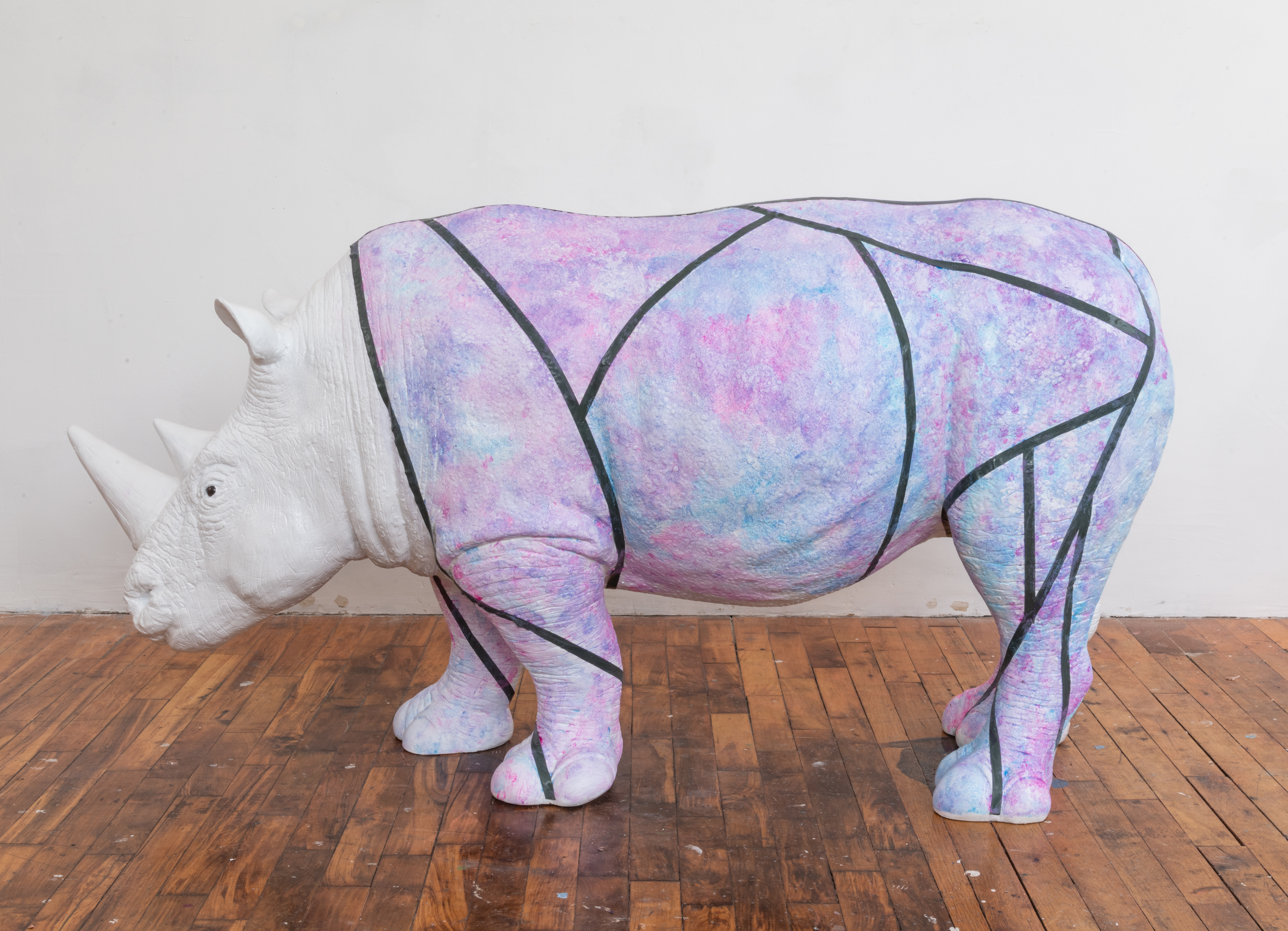
Grimo, courtesy of the artist and photographer Adam Reich.
Artist Kristina Libby is no stranger to the power of public art: during the onset of COVID, Libby founded the Floral Heart Project. In collaboration with 1-800-Flowers, The Floral Heart Project created and distributed floral heart wreaths as a tribute to those who lost their lives to COVID-19. Moved by community response to the Floral Heart Project, Libby has created a series of large sculptures of apex animals known as the Chunkos. Greenwich Village, a hot-spot for both art and architecture, will play host to the Chunkos in an immersive exhibition titled In Plain Sight (on view from June 10-12). The exhibit is inspired by the unique history of animals in art and architecture in the neighborhood and is a celebration of the resilience, courage and creativity of New Yorkers from all walks of life. On Friday, June 10th, there will be an interactive public art painting exercise with Libby and the Village Alliance Business Improvement District from 5-7pm. She hopes that the installation of the Chunkos in Astor place will spark new conversations and evoke curiosity from passerbys. Curious artists of all ages are welcome to join as she paints in real time with the help of the community the inaugural animals in her Chunkos series.
This exhibition re-imagines the lives of apex animals that have banded together as the Chunkos, on our own city streets. How did this concept come to life? How did these animals become known as the chunkos?
Last year, I created a public art project called the Floral Heart Project. It was an effort to support those who had lost loved ones to COVID-19 and recognize our losses. And, it was deeply moving to work with so many people who were so impacted. After that project was purchased and brought in-house by 1-800-Flowers, I took a long break and spent time working in ceramics. Ceramics helped me to navigate the complex slew of emotions I was feeling after doing so much work with the community about death and dying. And, one day, I was just playing around and made an elephant. It brought me so much joy to see her little shape come out of the clay. I remember actually laughing.
In time, I became more intrigued with that relationship between animals and joy. But, at the same time, more deeply concerned about climate change and the climate crisis. I wanted to do something that utilized our natural connection to animals to galvanize positive social interactions in order to improve the world.
When I look at failures to respond to climate change and mass trauma, what I see are social flaws. I see a culture where “I” has been prioritized over “we”. And, unfortunately, “I” is useless in a world where we don’t have strong “we” communities. I believe strong communities grow when everyone feels recognized, and appreciated BUT also as if they have a pivotal role to play in that community. And, I think we forget that every single human has a deep, inherent and compelling purpose – and a need for their purpose to be recognized.
This thinking is what drove the Chunkos. A funny name that derived from the fact that they are all big, chunky animals. These huge creatures are like humans: apex or keystone animals. And, through their very existence – they create whole worlds. By being: eating, walking, pooping, they make a habitable world for others. And, the more themselves they are by doing their basic tasks the more that they make even better worlds.
This has evolved further with the Chunkos bearing a very specific aesthetic design: brightly colored bodies with white heads which further point to the inherent struggle we humans have at being the biggest version of ourselves. The white heads represent the mask we wear as we struggle with who humanity wants us to be, while the colorful bodies represent our dynamic and vivid desires, needs and capacity.
As the Chunkos struggle visually and in stories, to actualize their desires and search for their purpose, they serve as a powerful reminder of our own journey. And, they encourage us to live BIG by remembering that we are more powerful and important than we think.
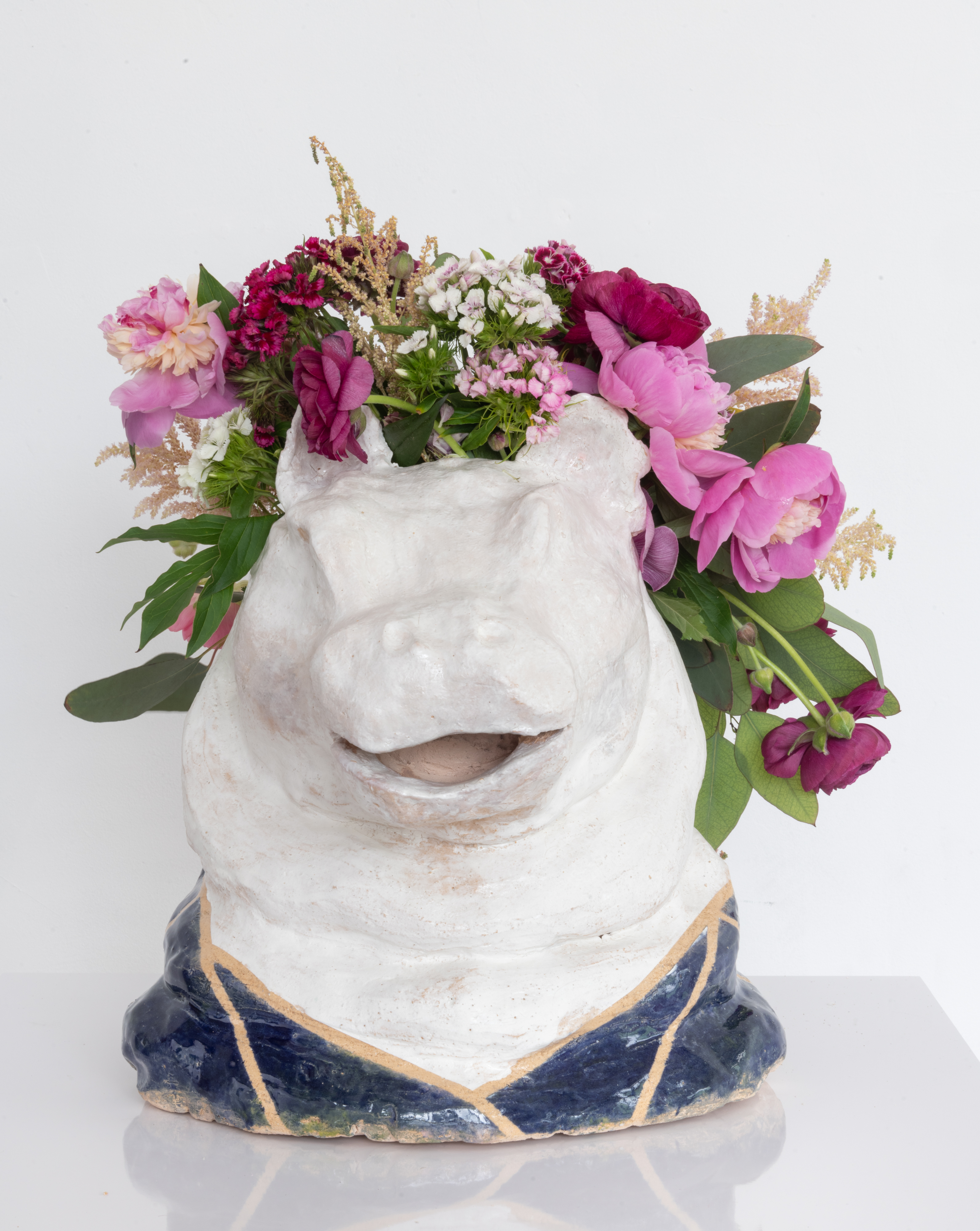
Mabel, courtesy of the artist and photographer Adam Reich.
In the press release, you mentioned that these big apex animals create whole ecosystems by being themselves. How?
Keystone animals, which are often an apex in their ecosystem, build worlds around themselves by being themselves. For example, whales build whole ecosystems from their poop. Elephants by merely walking around help to change the topography of their environment. Sea turtles help keep beach dunes, keep seafloor habitat and coral reefs healthy, and keep jellyfish populations at bay. All of these activities also help our world by creating a more biologically diverse planet and helping to, in many cases, sequester carbon.
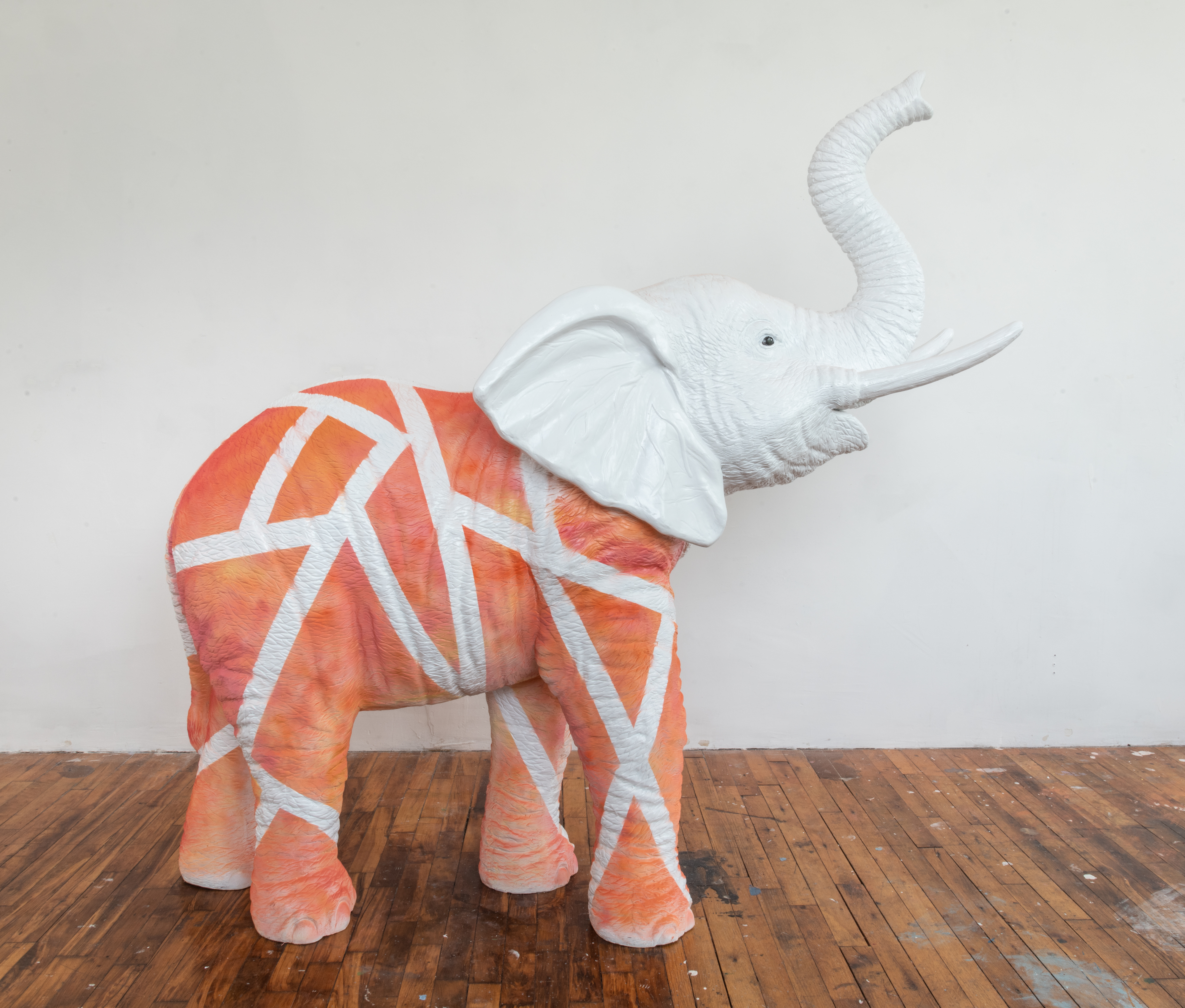
Ellie, courtesy of the artist and photographer Adam Reich.
The title of the show “In Plain Sight” acts as a double entendre since the animals will literally be placed in plain sight throughout Greenwich Village. Visitors should be ready for a bit of a scavenger hunt, and to take in the sights! What else do you hope that viewers will take away from this project?
So often in our NYC experience, we are heads down on our phones or desensitized to our environment. We miss both the literal and figurative (humans!) in our midst. The show’s scavenger hunt nature is a way to have a bit of fun with an art exhibit but also to serve as a reminder that there are things we miss all around us when we are not paying attention.
Concurrently, there is a long history of animal art and architecture in New York. In the 1990s, a small group of art and architecture enthusiasts created the 7As – the American Association for the Advancement and Appreciation of Animals in Arts and Architecture. This tongue-in-cheek organization was an effort to recognize the long history of animals in arts and architecture all over the city. New Yorkers might not notice but we are living in a sculpture garden of animals. Now that I’ve told you, you will see it everywhere!
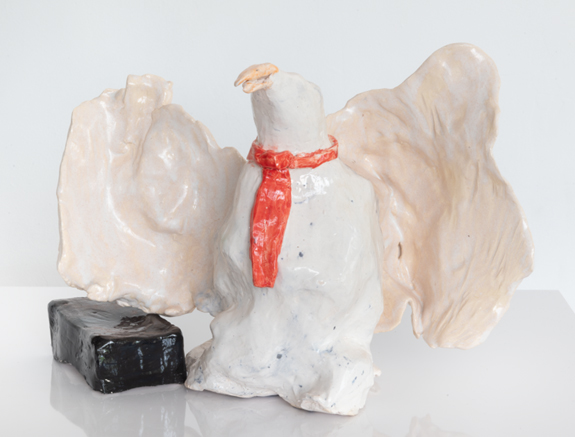
Bill, courtesy of the artist and photographer Adam Reich.
It turns out that there is a real life Herschel, who is actually a very hungry seal with an appetite for steelhead trout! Are the other Chunkos based on real life animals?
Yes! All of the Chunkos are based on animals I’ve had direct interaction with or whose stories I found inspiring. Humphry, the whale, is based on a San Francisco whale who kept entering the harbor. Eventually, his insistence of being there led to the development of a new strategy for whale re-direction when their lives are at risk due to human activity. Ellie is based on a precocious hippo that I met on a trip to Rwanda in 2020 whose mother kept pulling her away as she kept coming closer and closer to see me. And, Mabel is based on a hippo I was very forcefully pulled away from when I was in Kenya in 2016. I was interested in Mabel. Mabel was not interested in me!
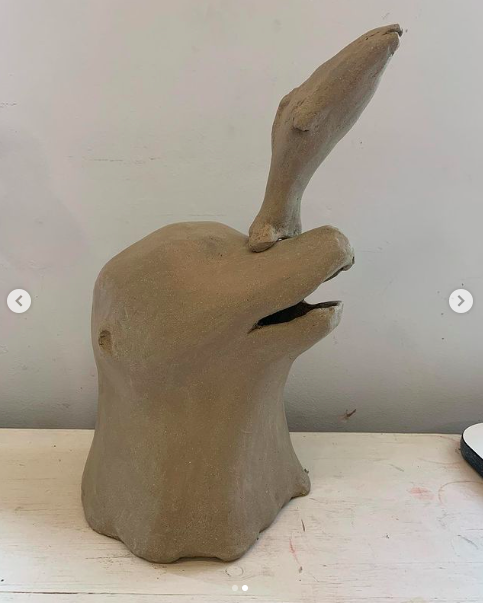
Herschel, courtesy of the artist.
Can you share a little bit more about the collaboration with other artists and how their work fits into the theme?
I’m thrilled to be doing this with a group of local artists who are all exploring animals in their art forms as well. Among them, Nathan Ng Catlin is an extraordinary graphic artist whose work includes animals in small and discrete ways that really work with the theme. Elizabeth Pillsbury is a ceramic artist whose work is the result of a lifelong investigation into oysters. And, Katerina Christina is a phenomenal photographer whose work captures the playfulness and joy of animals she has seen.
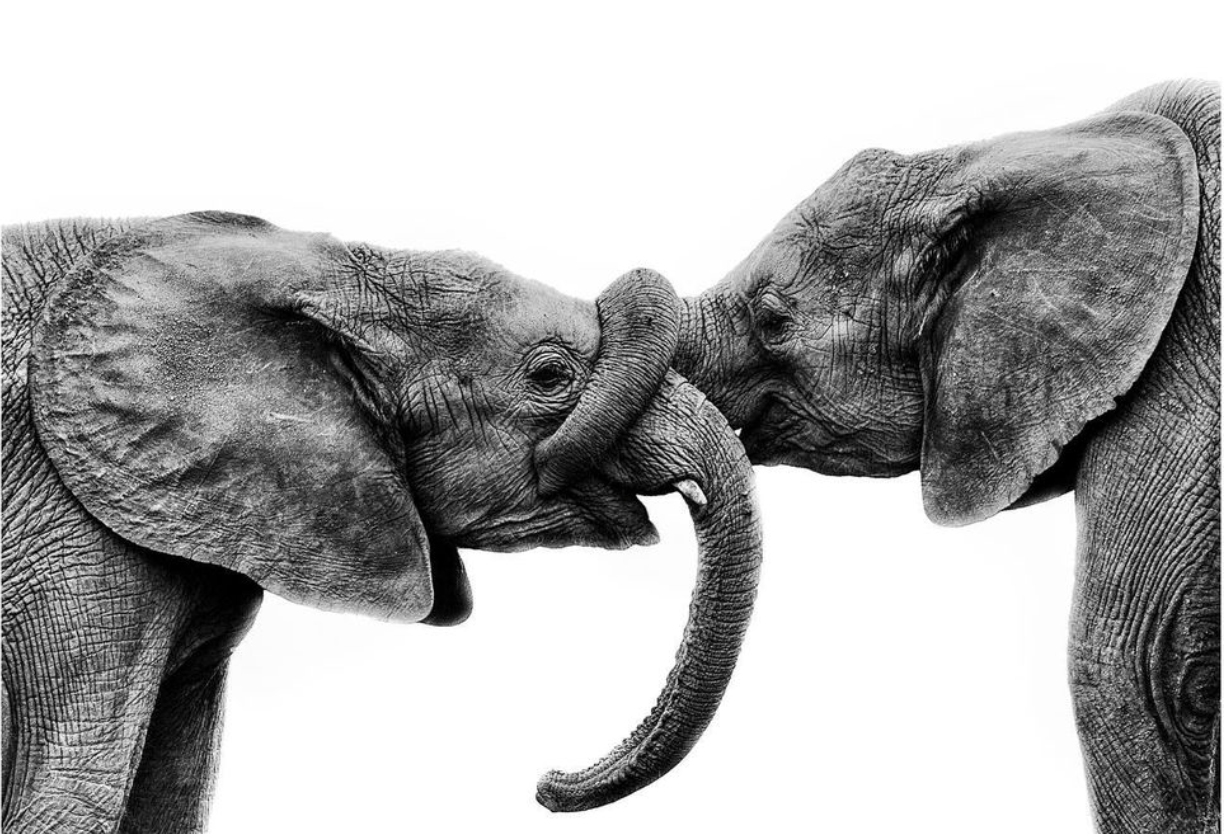
Photo courtesy of Katerina Christina.
Last year, you created the Floral Heart Project as a way for people to commemorate those who tragically passed away from COVID and also as a tool to grieve. This work is definitely a departure from some of what you’ve done in the past. Do you imagine more public art installations in your future?
Yes! I really love art in the public sphere because I think it is a powerful and compelling tool to have larger conversations with communities. There is a wonderful thing about working directly with individual collectors on pieces for their home. That is so intimate and meaningful. However, in the public space, you have the chance to really work with, improve and challenge the community. I think of it as not just art but also activism in a way that is accessible to a wide range of people.
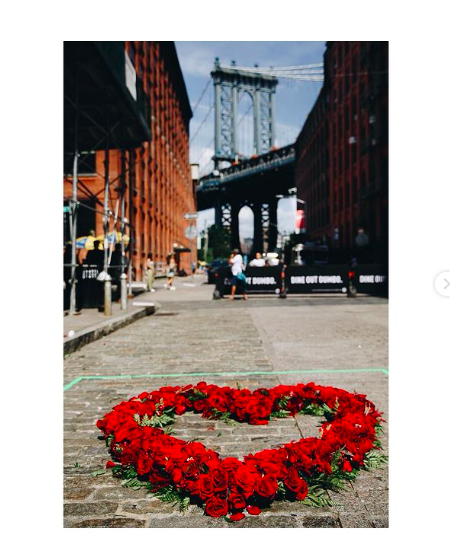
Photo courtesy of Erica Reade and Katerina Christina.
What’s the next step for the Chunkos? Is it possible the Chunkos will travel to another city?
Yes! I want to keep expanding the world of the Chunkos. I’d love to bring them to other cities, create murals with them, and possibly bring their story into book form. I think there is so much that we can do with this message and concept and I’m excited to scale the idea.
What else do you have coming down the pipeline?
I’m working on a number of larger sculptural pieces that I hope to launch in 2023 and, as always, continuing my painting practice.
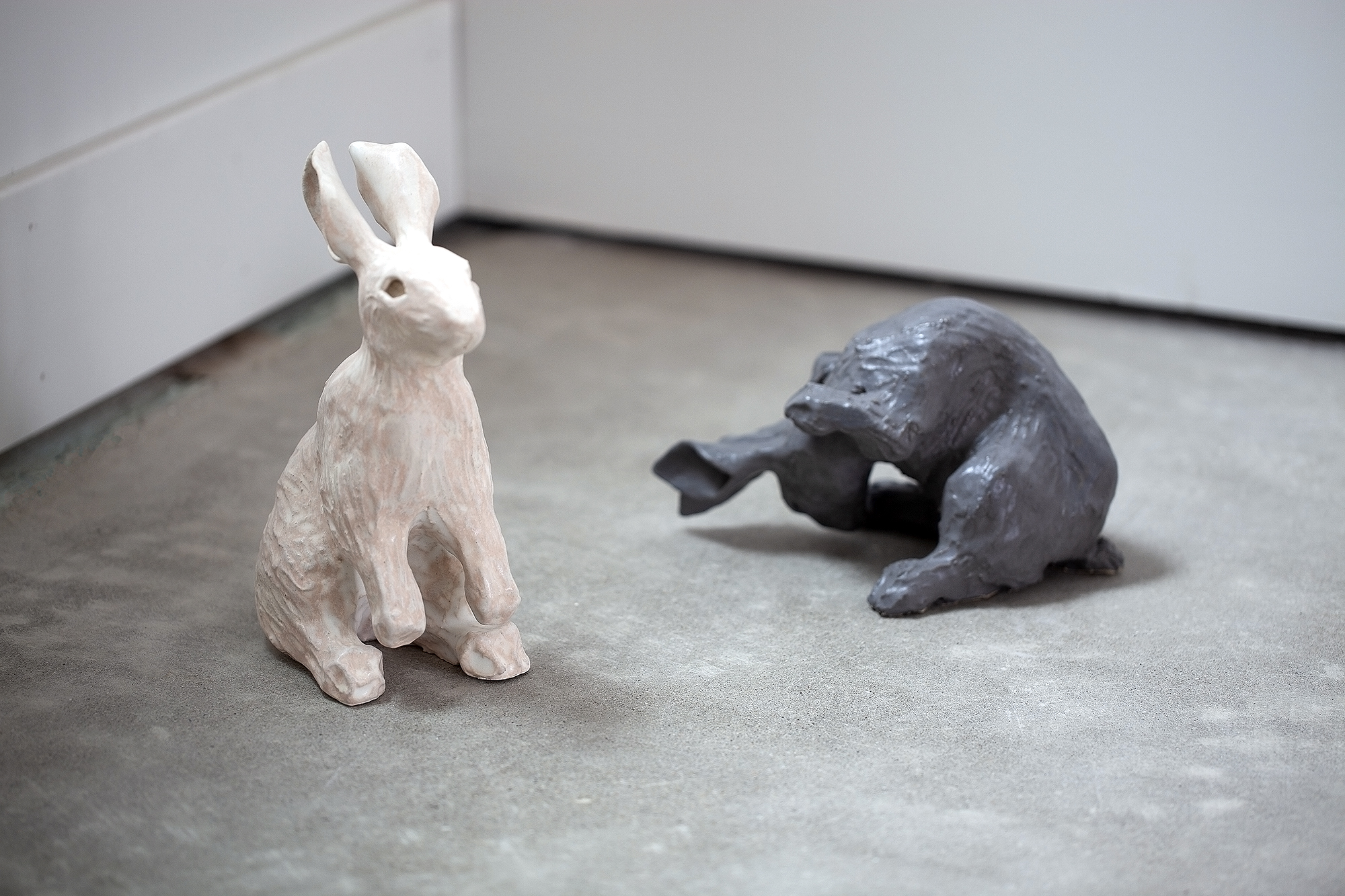
Courtesy of Wren MacDonald.
Sponsored interview.
Kristina Libby (b. 1984, Damariscotta Maine) is an artist based in New York City. Her work is an ongoing investigation into the profound experience of being human. Through sculpture, design, public art and fine art, she utilizes surprise, whimsy and disconnections to cultivate a sense of curiosity and playfulness. Her work has been discussed and reviewed in the New York Times, Washington Post, NY Post, NY Magazine, NBC, ABC, FOX amongst many others. Notably, her public art series “The Floral Heart Project” was cited as the catalyst for the introduction of COVID-19 memorial legislation in both the US Congress and with the US Congress of Mayors
Alexandra Emily Israel has worked on PR campaigns and exhibition announcements for different institutions, artists galleries and nonprofits in New York and across the country. She is also a contributing writer to the arts and culture website, Cultbytes.